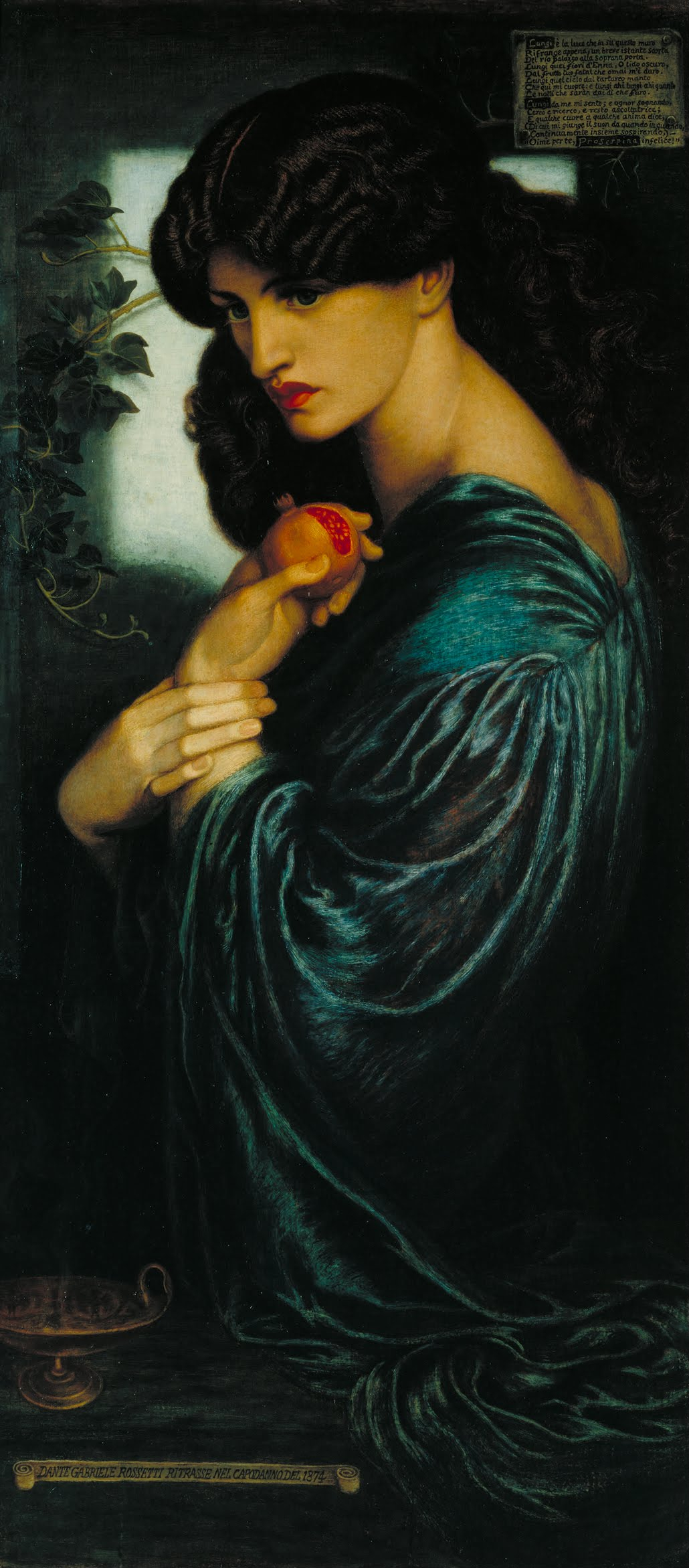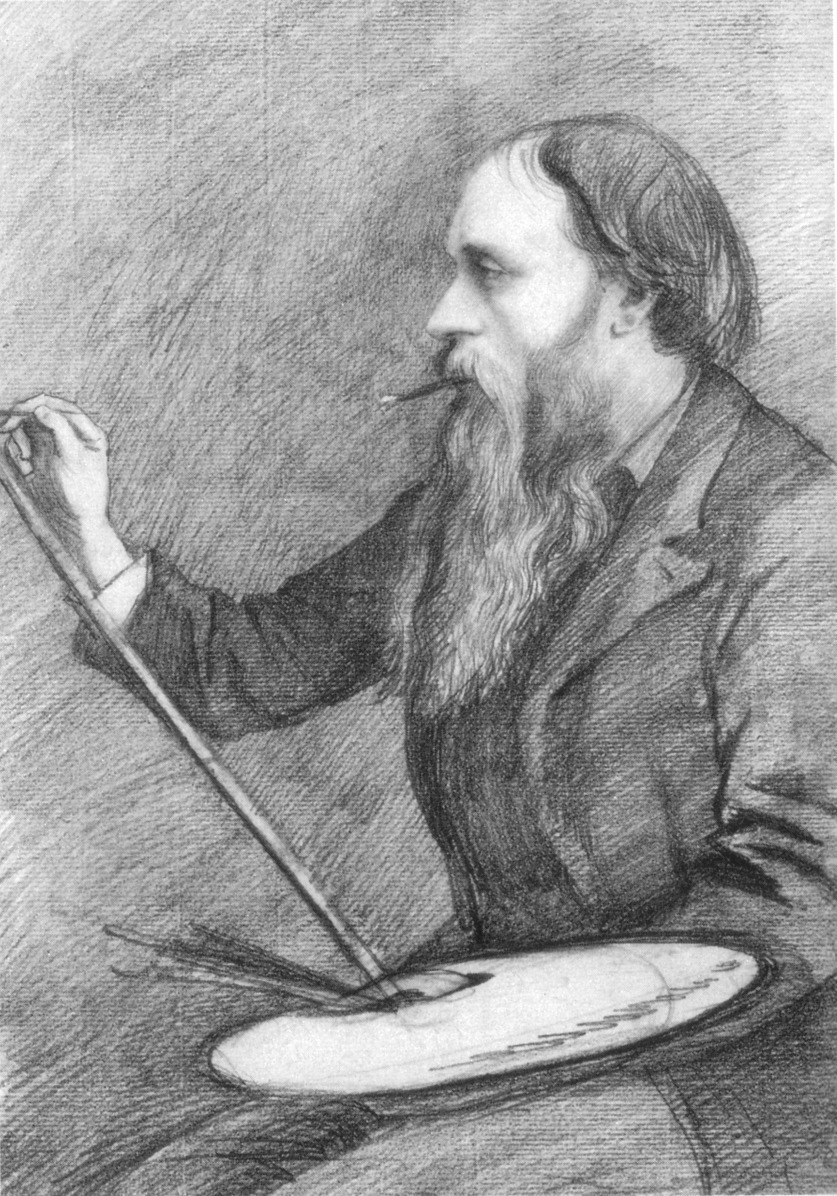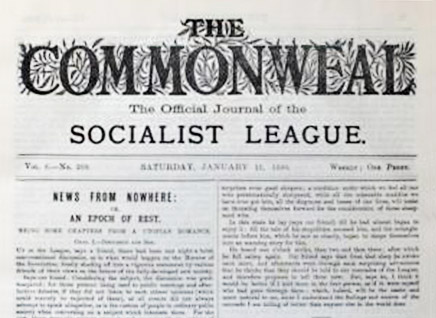|
Philip Webb
Philip Speakman Webb (12 January 1831 – 17 April 1915) was a British architect and designer sometimes called the Father of Arts and Crafts Architecture. His use of vernacular architecture demonstrated his commitment to "the art of common building." Biography Born in Oxford, Webb studied at Aynho in Northamptonshire and was then articled to firms of builder-architects in Wolverhampton and Reading, Berkshire. He then moved to London where he eventually became a junior assistant to the architect George Edmund Street. While there he met William Morris in 1856 and then started his own practice in 1858. He is particularly noted as the designer of the Red House at Bexleyheath, south-east London in 1859 for William Morris, and – towards the end of his career – the house Standen (near East Grinstead in West Sussex). These were among several works in his favoured niche: country houses. A Greater London Council blue plaque commemorates both Webb and Morris at the ... [...More Info...] [...Related Items...] OR: [Wikipedia] [Google] [Baidu] |
Red House, Bexleyheath
Red House is a significant Arts and Crafts building located in Bexleyheath, south-east London, England. Co-designed in 1859 by the architect Philip Webb and the designer William Morris, it was created to serve as a family home for Morris. Construction was completed in 1860. Following an education at the University of Oxford, Morris decided to construct a rural house for himself and his new wife, Jane Morris, within a commuting distance of central London. Purchasing a plot of land in what at the time was the village of Upton in Kent, he employed his friend Webb to help him design and construct the house, financing the project with money inherited from his wealthy family. Morris was deeply influenced by Medievalism and Medieval-inspired Neo-Gothic styles are reflected throughout the building's design. It was constructed using Morris' ethos of craftsmanship and artisan skills and is an early example of what came to be known as the Arts and Crafts movement. A number of Morris' frie ... [...More Info...] [...Related Items...] OR: [Wikipedia] [Google] [Baidu] |
Blue Plaque
A blue plaque is a permanent sign installed in a public place in the United Kingdom and elsewhere to commemorate a link between that location and a famous person, event, or former building on the site, serving as a historical marker. The term is used in the United Kingdom in two different senses. It may be used narrowly and specifically to refer to the "official" scheme administered by English Heritage, and currently restricted to sites within Greater London; or it may be used less formally to encompass a number of similar schemes administered by organisations throughout the UK. The plaques erected are made in a variety of designs, shapes, materials and colours: some are blue, others are not. However, the term "blue plaque" is often used informally to encompass all such schemes. The "official" scheme traces its origins to that launched in 1866 in London, on the initiative of the politician William Ewart, to mark the homes and workplaces of famous people. It has been administe ... [...More Info...] [...Related Items...] OR: [Wikipedia] [Google] [Baidu] |
Thomas Hugh Bell
Sir Thomas Hugh Bell, 2nd Baronet, (10 February 1844 – 29 June 1931) was an English industrialist, landowner, Justice of the Peace, and administrator. A Deputy Lieutenant of County Durham, he was High Sheriff of Durham in 1895 and Lord Lieutenant of the North Riding of Yorkshire from 1906 to 1931.''Burkes Peerage'' volume 1 (2003), page 331 He joined his family firm, Bell Brothers, and became director of its steelworks at Middlesbrough. Early life The son of Isaac Lowthian Bell, when he was eighteen the young Bell was required by his father to work at the family's Bell Brothers Ironworks at Walker, Newcastle upon Tyne, but he was later educated at Edinburgh, the Sorbonne in Paris, and in Germany. Career After joining the family firm, Bell Brothers, Bell was made the director of the family's large factory, the steelworks at Middlesbrough. He also served as mayor of Middlesbrough three times – in 1874, 1883 and 1911. He was, like his father, a director of the North Easte ... [...More Info...] [...Related Items...] OR: [Wikipedia] [Google] [Baidu] |
St Martin's Church, Brampton
St Martin's Church is in Front Street, Brampton, Cumbria, England. It is an active Anglican parish church in the deanery of Brampton, the archdeaconry of Carlisle and the diocese of Carlisle. It is recorded in the National Heritage List for England as a designated Grade I listed building and is the only church designed by the Pre-Raphaelite architect Philip Webb. The architectural historian Nikolaus Pevsner described it as "a very remarkable building". History The church was built on the site of a former late 17th-century hospital that had been converted into a chapel in 1789. It was built for George Howard, who later became the 9th Earl of Carlisle, together with other contributors, and was constructed between 1874 and 1878; the tower was added in 1906. The architect was Philip Webb who was closely connected with the Pre-Raphaelite Brotherhood; it is the only church designed by Webb. It was the successor to Brampton Old Church, situated about to the west of the ... [...More Info...] [...Related Items...] OR: [Wikipedia] [Google] [Baidu] |
Charles Howard (British Politician)
The Hon. Charles Wentworth George Howard (27 March 1814 – 11 April 1879) was a long-standing Whig (and then Liberal) British Member of Parliament. Early life Howard was the fifth son of George Howard, 6th Earl of Carlisle, and his wife Lady Georgiana Dorothy, daughter of William Cavendish, 5th Duke of Devonshire. Among his siblings was older brothers, George Howard, 7th Earl of Carlisle, and the Rev. William George Howard, 8th Earl of Carlisle, both of whom died unmarried and without legitimate issue. Career He was elected to the House of Commons as one of two representatives for Cumberland East at a by-election in 1840, a seat he held until his death in 1879. During his lengthy tenure, he served alongside William James from 1840 to 1847, William Marshall from 1847 to 1868, William Nicholson Hodgson from 1868 to 1876, and Stafford Howard from 1876 to 1879. Personal life On 8 August 1842, he was married to Mary Priscilla Harriet Parke (1822–1843), daughter of James Park ... [...More Info...] [...Related Items...] OR: [Wikipedia] [Google] [Baidu] |
1 Palace Green
1 Palace Green is a Grade II* listed house on Palace Green, Kensington, Palace Green, Kensington, London. It was built by Arts and Crafts movement, Arts and Crafts architect Philip Webb, completed in 1870 with additions in 1874, and decorated by Morris, Marshall, Faulkner & Company. Construction Webb designed the house over 1867–68 as a studio house for George Howard, 9th Earl of Carlisle, George Howard, a painter and the future 9th Earl of Carlisle, and his wife Rosalind Howard.Kirk (2005), pp. 71–74. The couple were associated with the Holland Park Circle of artists, and close friends of the artist Edward Burne-Jones. Webb saw his design as a return to London building traditions. His use of plain red brick, sash windows and a large gable on the street front provoked opposition from James Pennethorne, the surveyor for the Commissioners of Woods, Forests and Land Revenues, whose approval was needed as the site was leased from the Crown Estate. Pennethorne could not understan ... [...More Info...] [...Related Items...] OR: [Wikipedia] [Google] [Baidu] |
Pre-Raphaelites
The Pre-Raphaelite Brotherhood (later known as the Pre-Raphaelites) was a group of English painters, poets, and art critics, founded in 1848 by William Holman Hunt, John Everett Millais, Dante Gabriel Rossetti, William Michael Rossetti, James Collinson, Frederic George Stephens and Thomas Woolner who formed a seven-member "Brotherhood" modelled in part on the Nazarene movement. The Brotherhood was only ever a loose association and their principles were shared by other artists of the time, including Ford Madox Brown, Arthur Hughes and Marie Spartali Stillman. Later followers of the principles of the Brotherhood included Edward Burne-Jones, William Morris and John William Waterhouse. The group sought a return to the abundant detail, intense colours and complex compositions of Quattrocento Italian art. They rejected what they regarded as the mechanistic approach first adopted by Mannerist artists who succeeded Raphael and Michelangelo. The Brotherhood believed the Classical pos ... [...More Info...] [...Related Items...] OR: [Wikipedia] [Google] [Baidu] |
Brampton, Carlisle, Cumbria
Brampton is a market town, civil parish and electoral ward within the City of Carlisle district of Cumbria, England, about east of Carlisle and south of Hadrian's Wall. Historically part of Cumberland, it is situated off the A69 road which bypasses it. St Martin's Church is famous as the only church designed by the Pre-Raphaelite architect Philip Webb, and contains one of the most exquisite sets of stained glass windows designed by Sir Edward Burne-Jones, and executed in the William Morris studio. History The town is thought to have been founded in the 7th century as an Anglian settlement. The place-name 'Brampton' is first attested in Charter Rolls of 1252, where it appears as ''Braunton''. In the ''Taxatio Ecclesiastica'' of 1291 it appears as ''Brampton''. The name derives from the Old English 'Brōm-tūn', meaning "town or settlement where broom grew". Its original church survives a couple of miles away to the west as Brampton Old Church, on the site of a Stanegate R ... [...More Info...] [...Related Items...] OR: [Wikipedia] [Google] [Baidu] |
Naworth Castle
Naworth Castle, also known or recorded in historical documents as "Naward", is a castle in Cumbria, England, near the town of Brampton. It is adjacent to the A69, about east of Brampton. It is on the opposite side of the River Irthing to, and just within sight of, Lanercost Priory. It was the seat of the Barons Dacre and is now that of their cognatic descendants, the Earls of Carlisle. It is a Grade I listed building. History The castle is thought to have late 13th-century origins, in the form of a square keep and bailey. It was first mentioned in 1323, and in 1335, a licence to crenellate was granted to Ralph Dacre. Thomas Dacre (1467–1525), who commanded the reserve of the English army at the Battle of Flodden and was known as "the Builder Dacre", built the castle's gateway and placed over it his coat of arms with the Dacre family motto below: ''Fort en Loialte'' (Norman-French: "Strong in Loyalty"). It is likely that the 18th-century walled garden lies within the bou ... [...More Info...] [...Related Items...] OR: [Wikipedia] [Google] [Baidu] |
George Howard, 9th Earl Of Carlisle
George James Howard, 9th Earl of Carlisle (12 August 184316 April 1911), known as George Howard until 1889, was an English aristocrat, peer, politician, and painter. He was the last Earl of Carlisle to own Castle Howard. Early life Howard was born in London, England on 12 August 1843. He was the only son of Hon. Charles Howard and the Hon. Mary Parke, who died fourteen days after his birth. His father was the fifth son of George Howard, 6th Earl of Carlisle and his maternal grandfather was James Parke, 1st Baron Wensleydale. Among his father's family were uncles George Howard, 7th Earl of Carlisle and William George Howard, 8th Earl of Carlisle, who served as the Rector of Londesborough, both of whom died unmarried and without legitimate issue. He was educated at Eton and Trinity College, Cambridge, where he joined the Cambridge Apostles in 1864. After graduating from Cambridge he studied at Heatherley School of Fine Art in London. Career Howard's art teachers were Alphons ... [...More Info...] [...Related Items...] OR: [Wikipedia] [Google] [Baidu] |
Socialist League (UK, 1885)
The Socialist League was an early revolutionary socialist organisation in the United Kingdom. The organisation began as a dissident offshoot of the Social Democratic Federation of Henry Hyndman at the end of 1884. Never an ideologically harmonious group, by the 1890s the group had turned from socialism to anarchism, and disbanded in 1901. Organizational history Origins Until March 1884, the members of the Democratic Federation, forerunner of the Social Democratic Federation (SDF), worked together in harmony. The new organisation had expected to make rapid headway with existing radical workingmen's organisations but few chose to join the SDF. Early enthusiasm gave way to disappointment and introspection. Personal relationships began to loom large among the small group's leading members. The personal vanity and domineering attitude of the organisation's founder, Henry Hyndman, along with his nationalism and fixation on parliamentary politics, were the leading causes of the inter ... [...More Info...] [...Related Items...] OR: [Wikipedia] [Google] [Baidu] |
Society For The Protection Of Ancient Buildings
The Society for the Protection of Ancient Buildings (SPAB) (also known as Anti-Scrape) is an amenity society founded by William Morris, Philip Webb, and others in 1877 to oppose the destructive 'restoration' of ancient buildings occurring in Victorian England. "Ancient" is used here in the wider sense rather than the more usual modern sense of "pre-medieval." Morris was particularly concerned about the practice, which he described as "forgery", of attempting to return functioning buildings to an idealized state from the distant past, often involving the removal of elements added in their later development, which he thought had contributed to their interest as documents of the past. Instead, he proposed that ancient buildings should be repaired, not restored, to protect as cultural heritage their entire history. Today, these principles are widely accepted. The architect A.R. Powys served as the Secretary of the SPAB for 25 years in the early 20th century. Organization and a ... [...More Info...] [...Related Items...] OR: [Wikipedia] [Google] [Baidu] |



_-_geograph.org.uk_-_1582190.jpg)





